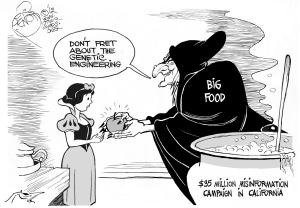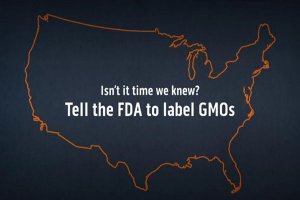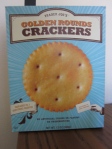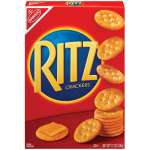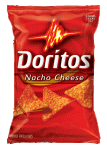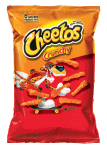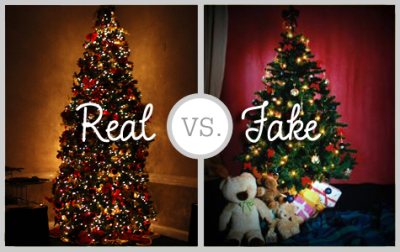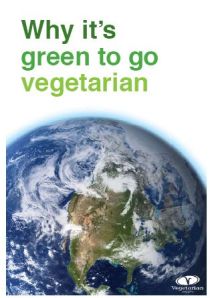CA Prop 37 The Right To Know
In case you don’t know California has Prop 37 on the ballot in this upcoming election.
Prop 37 will:
- Require labeling on raw or processed food offered to consumers if it is genetically modified or uses genetically modified food
- Prohibits labeling of food that is genetically modified as natural
If you want to know more on why I think GMOs should be labeled look at my previous post here
Even if you are okay with GMO foods why not give everyone the right to choose whether to consume it or not?
The campaign against Prop 37 is funded by Monsanto, the largest GMO producing company and has received additional funding by companies who use their product. Agribusiness has spent $35 million in campaigning against Prop 37
Prop 37 was created by the people and is supported by organic leaders and from small companies amounting to $4,065,135
You will not have any major jump in the cost of your food with this labeling. In the official financial effect summary it states that the only increased cost will be to the state $1,000-1 million in state administrative costs to make sure companies are labeling correctly. The CA Budget is 92 billion this is minuscule compared to the overall cost of running the state.
Don’t let big business win your vote. Polls have shown that 90% of americans want their food labeled. Don’t let their propaganda sway your original beliefs.
GMO Labeling in US?
There is some very exciting news Barbra Boxer and Peter DeFazio along with 53 other Senate and House lawmakers are urging the FDA to require labeling of genetically engineered foods so that consumers can make informed choices!!
If you want to learn more about Genetically Modified foods? Check out my previous blog post to learn more here.
What can you do?
Write your congressman or woman urging them to write to the FDA. You can sign this petition at Just Label It. This is a very important issue, we have the right to know what is in our food!!
“Only you can control your future.”
~Dr Suess
Valentines Day Doesn’t Love The Environment
Reflection to Elementary School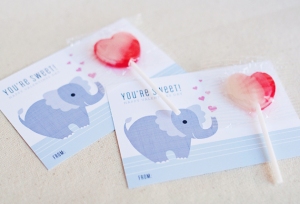
Since it is Valentines Day I was remembering back to my youth when I was in elementary school. In elementary school parents buy cards for everyone in the class and attach candy to them. This is basically a requirement seeing as if you are the only one not giving a valentine you are at high risk of becoming the class outcast. I remember just as every child I loved getting all the candy, but once I looked at the card once it became unnecessary waste.
According to Hallmark 188 million Valentine’s day cards are exchanged in America every year which doesn’t include the packaged valentines that schoolchildren give. Although this paper waste is not as much as wrapping paper during Christmas it still has a huge negative impact on the environment.
Green Valentines

For an alternative to buying valentines a great blog I found called ecocrazymom found a great way to create up-cycled homemade valentines from envelopes. Another idea is to make recycled valentines from cardboard and used printing paper. The information on this can be found on How to.
Some alternatives when sending cards to your loved ones are use cards that are plantable paper or seed paper. Some websites to check out for cards are botanical paperworks, Eco Party Time, and Green Field Paper Company.
So I hope that some of you consider this for next year and for all the holidays that use cards.
Will you use some of these resources? Do you have any ideas on how to create green valentines?
Trees are poems that earth writes upon the sky,
We fell them down and turn them into paper,
That we may record our emptiness.
~ Kahlil Gibran
Terracycling
TerraCycle Outsmart Waste
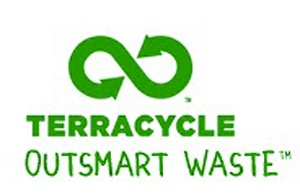
Recently my next door neighbors have started a brigade of terracycling through girl scouts. They collect items that normally will not be recycled or items that are hard-to-recycle through the terracycle program. I thought this was a great idea and am hoping to be able to start a brigade when I go back to my spring semester at college.
Their purpose is to eliminate waste. They create collection opportunities and solutions for things that are normally sent to the landfill.
They turn these products into new products like backpacks, benches, and bags. They use the Upcycle idea, where they use the old product as is, to create a new product. They do not utilize as much energy as recycling.
In 2010 and 2011 this program has spread to all over the world including France, Germany, Sweden, Norway, Spain, and many other countries.
What Can You Do?
Find a location near you that is participating in Terracycle, or start your own brigade. If everyone could get some of their community involved with terracyling we could reduce the amount of waste that goes into the landfill.
Can you get your community to participate? Will you start a brigade in your own community? Any thoughts on Terracycle?
“We are not to throw away those things which can benefit our neighbor. Goods are called good because they can be used for good: they are instruments for good, in the hands of those who use them properly.”
~Clement of Alexandria
My Green Grinch Christmas Tree
Happy New Year Hope Your Holidays Were Happy
Sorry I have not been blogging for a while, I have been super busy with finals, and then the holidays. I got back home and had to do some major decorating. There were no rent a tree companies near me, so I was debating if I should get a real tree. Instead my mom and I decided to be inovative.
A Green Grinch Christmas Tree

Our next door neighbors have a big Sycamore tree and the wind had broken off several large branches. They let us take a couple to play with to see if we could find a way to make them into our Christmas tree.
We took the branches and put it in a pot securing it with bags of kitty litter and a couple of bricks we had laying around. Next we put on a string of clear lights, securing them with small pieces of wire. We had stacked two pots on top of each other to get it high enough and wrapped it in fake snow. We searched through our ornaments to find a combination of silver and red christmas balls we thought were pleasing. We carefully arranged them onto the tree. We added the Grinch to the bottom of the tree because he seemed appropriate.

All of what was used on and around this tree was found around my house. I did not need to buy anything and it was all reused from previous Christmas decorations. I found it incredibly satisfying to have created it and everyone who visited me during the holiday season enjoyed the holiday spirit it created. I will be taking it down soon the branch will be put into green recycling bin, but I look forward to another Christmas Tree Challenge next year.
I challenge you next year to be creative with your christmas decorating, not only just with the tree but with other things also. Although I know the majority of people will never change their Christmas trees to this extreme I think it’s important to note that holiday spirit is something you create not something you can purchase.
Do you think you can be creative with holiday decorations? What did you do this holiday to make a difference environmentally?
“I speak for the trees, for the trees have no tongues.”
~Dr. Seuss
Lighting Up Holidays the Green Way
Brightening the Holiday Spirit 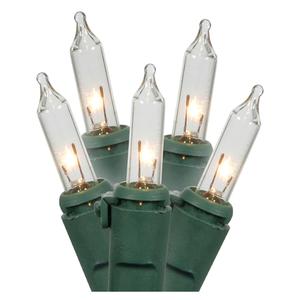
Now that Thanksgiving is over, I have started to decorate for Christmas. I love lights, and could never imagine a holiday without them. I know this is not very environmental, so I have researched ways to make it as environmental as possible. This year I have started my own collection of Christmas lights of my own. I decided that on short notice and low budget LED lights are my best option.
Holiday lights have become quite the tradition all over the United States. It goes along with the capitalistic/materialistic view of the holidays, which we have all been trapped into believing, me included. Lights are not only expensive to purchase, but all those lights on at all hours of the night take a toll on your electricity bill, as well as your environment.
LED, Your Gift for the Planet
- According to the Department of Energy, Holiday lights account for more than 6 terawatt-hours per year, the total electricity consumption of 500,000 homes. (The majority of lights being incandescent).
- Incandescent lights burn out quicker than LED lights which last as much as 10 times longer.
- LED lights have significantly less risk to cause a fire. LEDs also don’t contain mercury.
- When LED lights started they were often not as bright or attractive as incandescent lights, but with the increase of technology, they are almost identical in my opinion, that is if you find the right brands.
- LEDs use 80% less energy then incandescent lights.
If you have large incandescence replace them now with LED lights. But if you have mini-incandesent lights you should keep your old lights (if they are still safe to use), until they burn out. Then I recommend switching to LED lights. . If you throw out all your perfectly good christmas lights it creates a huge amount of waste and pollutes the environment.
When you are done with your lights don’t throw them away! Find a local recycling program.
Home Depot offers a trade in where you can get a discount on LED lights. (Although this program has passed for this year watch for it next year). Similar programs can be found with discounts on LED lights such as on Holiday LEDs
Greenest way to Brighten Your Home? 
Solar LED lights have the least environmental impact of all the possible lights that you can use. Solar lights use the solar panel, (photovoltaic cell) which collects sun’s energy and converts it to electric current. The battery is used to store electricity until it is used. LED bulbs turn on when it is dark. Being a new technology they do have some differences in brightness and availability. There are mixed reviews depending on weather, so before buying them make sure your yard would be able to have adequate light.
Pros
- Easy to setup: don’t have to worry about outlets and cords
- Convenient: turn on automatically.
- Safety: No extension cords, lights stay cooler.
- Free Energy: solar powered
Cons
- Initial Price: is expensive, but less electrical bills.
- Sunlight dependent: Without adequate sunlight they won’t shine as long
- Weather: snow, rain, cold/cloudy can prevent adequate sunlight.
What You Can Do to Keep the Holiday Spirit 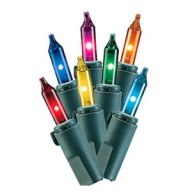
- Instead of putting up every strand of lights you own, do a smaller presentation of lights.
- Use LED lights instead of regular lights.
- Use mini-lights instead of full-sized lights.
- Turn lights off once you go to sleep.
- If you live in a place where solar lights are functional use them instead.
What lights will you be using this year? Do you think LED or LED solar is a better option for you?
Those Christmas lights, Light up the street, Down where the sea and city meet, May all your troubles soon be gone, Oh Christmas Lights Keep Shining on
~Coldplay
Are Real or Artificial Christmas Trees Greener?
Benefits of Artificial Trees 
They are re-used every year.
- They don’t produce as much waste as real trees.
- More economical because you do not need to buy a new tree every year.
Clean
- Artificial trees do not shed their needles.
- There is no sap to make them sticky.
- No watering needed.
Safety
- This tree does not dry out and become a fire hazard.
- It is made from fire-resistant poly vinyl.
Size options and equal all around
- These are all the same all the way around, no imperfections.
- Multiple sizes and styles.
Negatives of Artificial Trees
- Very difficult to recycle. It leaches plasticizers, stabilizers into landfills.
- Lack of scent
- Many known carcinogens including dioxin, ethylene dichloride, vinyl chloride, and heavy metals are produced when PVC is made. This pollutes neighborhoods near factory sites.
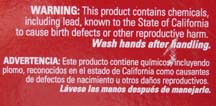
- The effects of these toxins can hinder; male reproduction, development,pregnancy loss, female infertility, asthma, and other respiratory problems.
- 85% of fake trees sold in North America Originate from China.
- Contain Lead and other additives linked to kidney, neurological and reproductive system damage in lab animals.
- Many fake trees have a warning label telling you to avoid inhaling or eating dust particles.
- Petroleum is used to make them (not sustainable)
Benefits of Real Trees
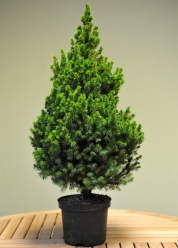 They are absorbing Carbon Dioxide and emitting fresh oxygen.
They are absorbing Carbon Dioxide and emitting fresh oxygen.- For every tree that is cut down they plant 1-3 seeds.
- They are farmed in US & Canada so less distance to travel.
- 100% biodegradable
- No toxic chemicals (if organically grown).
- Able to be recycled, it is composted.
Negatives of Real Trees
- Pesticides and fertilizers, if used contribute to pollution of watershed.
- Lots of holiday trees are discarded.
- It takes 7 years to grow a average 7-foot tree, so there are thousands of acres used in the production of them.
- Fire Hazard.
If you already have an artificial tree, don’t throw it away.
Real Christmas Trees have the least amount of environmental harm.
The best option is to buy a live tree. These are potted trees that will continue to live after the Christmas season. They can be planted in your yard, also there are Trees for Rent and The Living Christmas Company. These companies provides trees and then takes them back and allows them to grow taller for the next year. A live tree is the best option for a truly environmental Merry Christmas.
What kind of tree are you using for the holidays? In your opinion what do you think is the most environmental? Will the industry be able to move towards renting real trees?
“O Christmas Tree! O Christmas Tree! Thy leaves are so unchanging; Not only green when summer’s here, but also when ’tis cold and drear…”
~Unknown Author
Wrapping Presents, Not A Gift To The Earth
- Every year hundreds and hundreds of presents are given around the holidays.
- Christmas time has become a consumerist holiday, it’s all about the gifts.
- Billions of dollars are spent on Christmas.
Deck the Dumpsters with Tons of Waste
 With gifts being the focus of the holidays all of those presents need to be wrapped.
With gifts being the focus of the holidays all of those presents need to be wrapped.- Half of the paper America consumes is used to wrap and decorate products.
- Gift-wrap and shopping bags totals 4 million tons annually in the US.
- 15 trees per ton of wrapping paper is used, that’s 60 million trees for our gifts!
- Average American uses 2 pounds of wrapping paper a year.
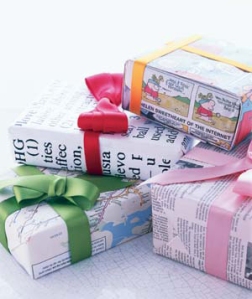 If you want to use wrapping paper use recycled paper (30% recycled paper saves 7.2 trees).
If you want to use wrapping paper use recycled paper (30% recycled paper saves 7.2 trees).- Reuse wrapping paper, bags, ribbons and bows, year after year.
- Wrap with fabric.
- Use newspapers or paper bags as gift wrap. (You can decorate paper bags with stamps, paint or stickers to make them more festive).
- Use reusable cloth bags. (There are a wide range of them you can find online if you search for reusable gift bags).
- You could make your own cloth bag by buying fabric. What is great about these is that they can be reused every year. If you want to be fancy you could make the bags reversible so that you had two patterns on one bag.

- Wrap your gift in a reusable shopping bag.
- Instead of using ribbon that has plastic in it use spare yarn, or fabric.
- Use a small little gift to decorate (a doll, a ornament)
- Include Towels in your gift and use them to wrap it.
- Use a scarf as a decoration on your gift.
- Instead of buying decorations use natural things such as plants or flowers.
Vegetarianism, Saving the Planet
Following a vegetarian diet is one in which you do not eat meat (seafood, poultry, or red). There are different types of vegetarian diets. An ovo-vegetarian diet includes eggs but not dairy products. Lacto-vegetarians diet includes dairy products but not eggs. Lacto-ovo vegetarians diet includes eggs and dairy products. Also a variation is a vegan diet in which no animal products (meat, eggs, dairy, honey) are eaten. Semi-vegetarian diets can include ingredients that are not vegetarian such as fish.
Many people do not know the other methods of achieving protein other than through meats. Some of these include dairy, eggs, soy, hempseed, beans, brown rice, hummus, whole wheats, quinoa, peanut butter, tofu, legumes, and many others. There are many sources of protein that are available.
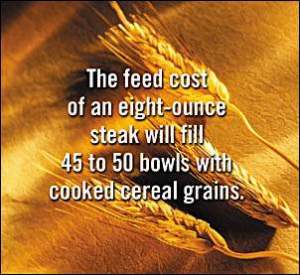
- The United Nations has urged the world to move away from meat diets.
- Eating meat takes up many resources. All the animals have to eat in to get nutrients.
- It is estimated that between 13,000-100,000 liters of water is used to produce a kilo of beef. In contrast to wheat which only uses 1,000-2,000 litres.
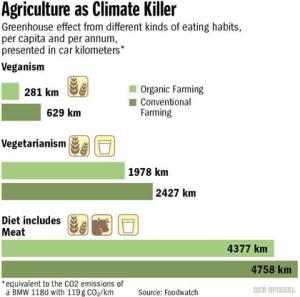 Many greenhouse emissions are produced with meat. Also organic farming has less of a greenhouse effect.
Many greenhouse emissions are produced with meat. Also organic farming has less of a greenhouse effect.- Produces 9% of CO2 deriving from human-related activities
- Livestock produces 37% of all human-induced methane, and 65% of ammonia (which contributes to acid rain).
- Animals pollute our rivers, streams and oceans because of manure. (It has lead to the dead zones in the Gulf of Mexico)
- 70% of all agricultural land is for farmed animals, either their food or where they are kept. (This has increased deforestation and has endangered habitats)
- Has increased Endangered Species (such as many fish, and whales)
Health Benefits of Eating Vegetarian
Studies have found that vegetarians live longer. A plant-based diet can prevent diseases. The American Dietetic Association states that vegetarians have reduced risk of heart disease, obesity, colon cancer, adult-onset diabetes, osteoporosis, gout, gallstones, kidney stones, lung cancer, and breast cancer. A healthy vegetarian diet that is low in fat when combined with adequate exercise helps reduce blood pressure and can control or even eliminate non-insulin dependent diabetes.
Throughout my whole life, I have been vegetarian. Growing up my mother didn’t like meat, and since her family was not big meat eaters it was very easy for her to become vegetarian, my father’s family has been vegetarian, so for me it was the obvious choice. My parents never told me I could not have meat, but I never developed an appetite for it, and do not find it appealing. Whenever I tell people I am vegetarian they always are astonished and exclaim “How can you do it?” But for me it comes naturally, and it is very easy. While I realize this may not be the case with everyone, just cutting meat out of as many meals as possible is beneficial.
Do you think you could become vegetarian? If not could you eat Vegetarian 2-4 days a week?
“Nothing will benefit human health and increase chances for survival of life on Earth as much as the evolution to a vegetarian diet.”
